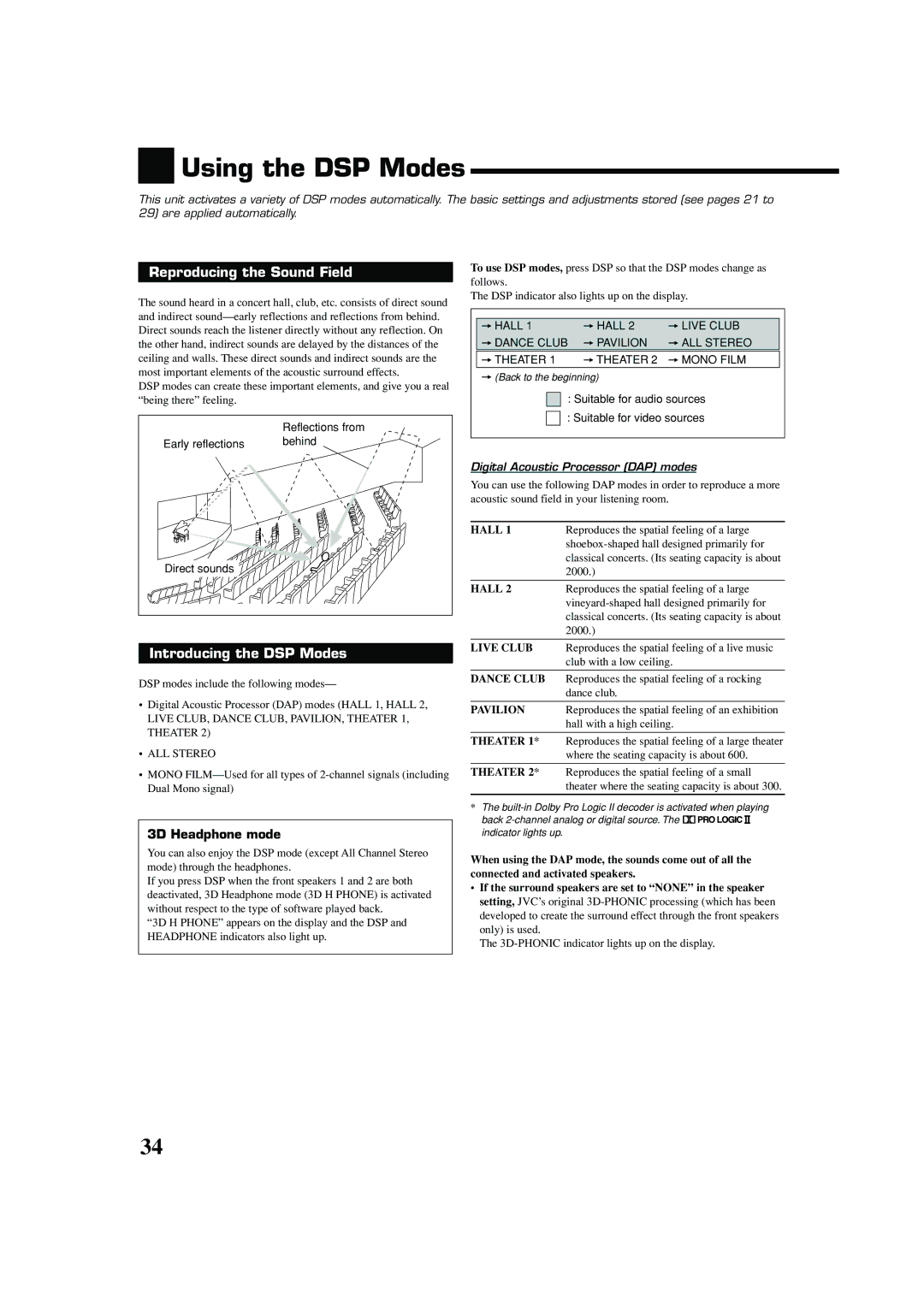

 Using the DSP Modes
Using the DSP Modes
This unit activates a variety of DSP modes automatically. The basic settings and adjustments stored (see pages 21 to 29) are applied automatically.
Reproducing the Sound Field
The sound heard in a concert hall, club, etc. consists of direct sound and indirect
DSP modes can create these important elements, and give you a real “being there” feeling.
| Reflections from |
Early reflections | behind |
Direct sounds |
|
Introducing the DSP Modes
DSP modes include the following modes—
•Digital Acoustic Processor (DAP) modes (HALL 1, HALL 2, LIVE CLUB, DANCE CLUB, PAVILION, THEATER 1, THEATER 2)
•ALL STEREO
•MONO
3D Headphone mode
You can also enjoy the DSP mode (except All Channel Stereo mode) through the headphones.
If you press DSP when the front speakers 1 and 2 are both deactivated, 3D Headphone mode (3D H PHONE) is activated without respect to the type of software played back.
“3D H PHONE” appears on the display and the DSP and HEADPHONE indicators also light up.
To use DSP modes, press DSP so that the DSP modes change as follows.
The DSP indicator also lights up on the display.
= HALL 1 | = HALL 2 | = LIVE CLUB |
= DANCE CLUB | = PAVILION | = ALL STEREO |
|
|
|
= THEATER 1 | = THEATER 2 | = MONO FILM |
=(Back to the beginning)
: Suitable for audio sources
: Suitable for video sources
Digital Acoustic Processor (DAP) modes
You can use the following DAP modes in order to reproduce a more acoustic sound field in your listening room.
HALL 1 | Reproduces the spatial feeling of a large |
| |
| classical concerts. (Its seating capacity is about |
| 2000.) |
|
|
HALL 2 | Reproduces the spatial feeling of a large |
| |
| classical concerts. (Its seating capacity is about |
| 2000.) |
|
|
LIVE CLUB | Reproduces the spatial feeling of a live music |
| club with a low ceiling. |
|
|
DANCE CLUB | Reproduces the spatial feeling of a rocking |
| dance club. |
|
|
PAVILION | Reproduces the spatial feeling of an exhibition |
| hall with a high ceiling. |
|
|
THEATER 1* | Reproduces the spatial feeling of a large theater |
| where the seating capacity is about 600. |
|
|
THEATER 2* | Reproduces the spatial feeling of a small |
| theater where the seating capacity is about 300. |
*The ![]()
![]()
![]()
![]()
![]()
![]()
![]() indicator lights up.
indicator lights up.
When using the DAP mode, the sounds come out of all the connected and activated speakers.
•If the surround speakers are set to “NONE” in the speaker setting, JVC’s original
The
34
